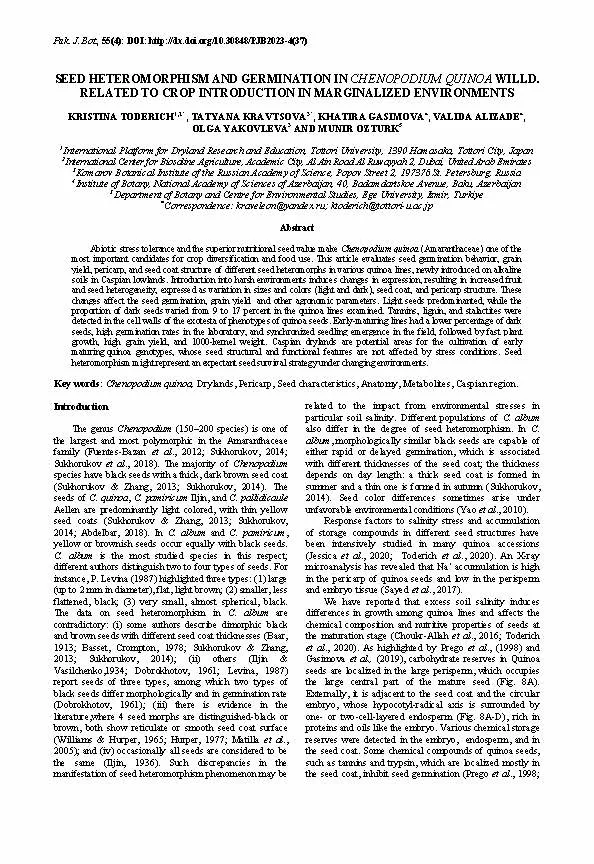Seed heteromorphism and germination in chenopodium quinoa willd. related to crop introduction in marginalized environments
Abiotic stress tolerance and the superior nutritional seed value make Chenopodium quinoa (Amaranthaceae) one of the most important candidates for crop diversification and food use. This article evaluates seed germination behavior, grain yield, pericarp, and seed coat structure of different seed heteromorphs in various quinoa lines, newly introduced on alkaline soils in Caspian lowlands. Introduction into harsh environments induces changes in expression, resulting in increased fruit and seed heterogeneity, expressed as variation in sizes and colors (light and dark), seed coat, and pericarp structure. These changes affect the seed germination, grain yield and other agronomic parameters. Light seeds predominanted, while the proportion of dark seeds varied from 9 to 17 percent in the quinoa lines examined. Tannins, lignin, and stalactites were detected in the cell walls of the exotesta of phenotypes of quinoa seeds. Early-maturing lines had a lower percentage of dark seeds, high germination rates in the laboratory, and synchronized seedling emergence in the field, followed by fast plant growth, high grain yield, and 1000-kernel weight. Caspian drylands are potential areas for the cultivation of early maturing quinoa genotypes, whose seed structural and functional features are not affected by stress conditions. Seed heteromorphism might represent an expectant seed survival strategy under changing environments.
Year
2023
Publication Source
Pakistan Journal of Botany
Publication type
Scientific Paper











